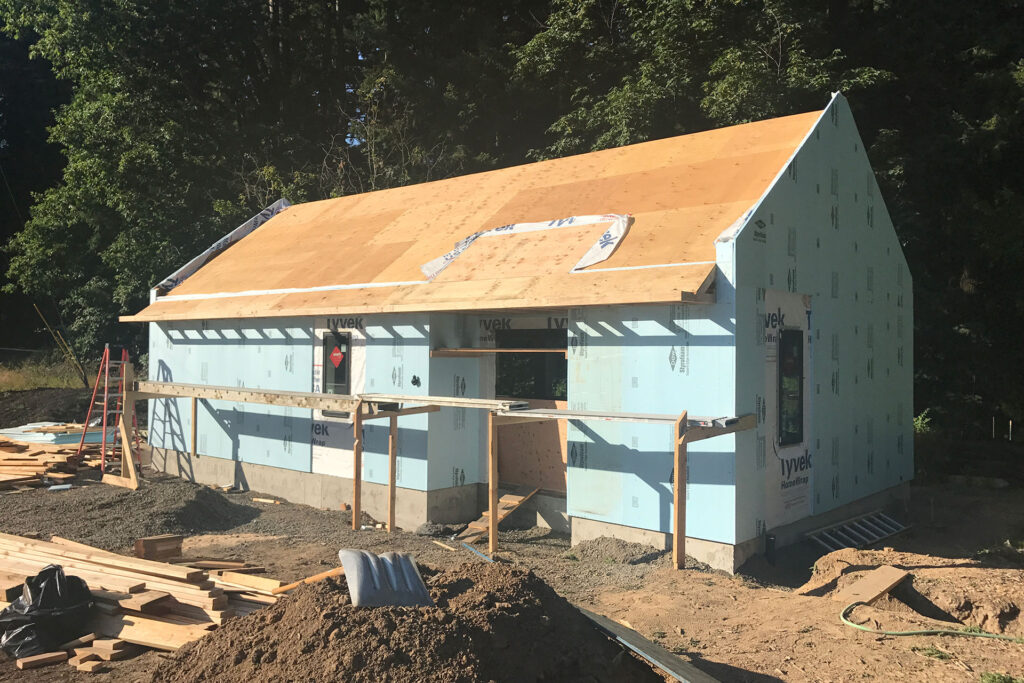We often first hear the phrase—Up To Code—when we buy our first house. The real estate agent talks about the upgrades and features of a home and often will intone the phrase, “Everything is Up To Code” to assure the buyer that they are looking at a top-notch residence.

You hear it when the home inspector reports that some element of the building is in need of attention: “You need a smoke detector in this bedroom to be Up To Code.” Or that some system is checking out as appropriately serviceable: “Your electrical outlets are all grounded and installed Up To Code.” Or perhaps the system needs a little adjustment to make it right: “You need more insulation in the attic to be Up To Code.”
We get the idea that something done Up To Code is a kind of ideal. It represents high quality and safety.
However, that impression is misleading. Yes, the building code establishes standards of construction to protect the health and safety of all residents (current and future). We should be happy that this sort of regulation exists. It gives us confidence that the various buildings we enter during any given day won’t tumble down around us if the wind is too strong.
But code compliant construction is literally the lowest quality installation allowed by law.
Builders and tradesmen, who are regulated by the local jurisdictions, are required to provide a minimum quality level because often their work is buried or invisible to people who occupy the buildings. Sometimes hidden work is just an outdated, historic installation, and sometimes it’s a cheaper, low-quality effort to flip the property and maximize a return. Neither serves the current owner well and both situations can cause future issues.
We can do better.
As a homeowner, setting the bar higher than base code compliance can provide a better quality of life for you, your family, and your home. People find it hard to get excited about these types of home improvement projects because there isn’t necessarily the same visual satisfaction when the project is all done. The new façade or bathroom and kitchen renovations have the visual wow factor that can easily be shared and appreciated, whereas a hidden insulation or wiring upgrade is often forgotten.
Investing in better-than-code home improvements can provide a wow factor to your comfort and household bills.
Better than Code—Amp up the insulation.
One of the best ways to make your home better than code is to upgrade the insulation. This is a one-time fixed cost, and it doesn’t require maintenance over time. During a construction project, insulation is relatively inexpensive to install. Let’s face it, this is something to invest in when the walls of the home are exposed because you aren’t going to do this type of project at any other time. And, this investment will serve the house over time, especially as energy costs always tend to increase. You will be thankful year after year for this energy savings plan.
As an example, codes for this studio specify the exterior walls to be R-21. With the addition of one inch of rigid exterior insulation, the walls are now R-26. You can take it further by upgrading the insulation on the interior of the wall as well.

At the Point Loma House, the Up To Code standard was R-21. In addition to 1-1/2 inches of rigid insulation on the exterior (R-value of 7.5), we used blown glass fiber inside the walls (R-value of 23). This combination yielded a final R-value of R-30.5.
What does all of this R-talk mean? The higher the number the better. And better means your home stays cool in the summer and retains the heat during the winter. You save immediately on monthly energy costs by reducing the daily and seasonal swings where energy is lost to the environment. It also provides built-in noise control. Who doesn’t want a quiet, temperature-controlled home?
What else can we do to be better than Up To Code?
Homeowners often hear about upgrading insulation to save on energy costs. But they might not know how to go about it. As building design experts, we have recommendations to maximize your value in a variety of building systems and the experience to craft a wholistic strategy to combine them in your home. As we develop this blog, we will share more ideas of improvements over Up To Code. Look for posts on electrical, plumbing and HVAC improvements as well as other building science ideas for better buildings.
Let our expertise guide you to a longer lasting investment in your home. Give us a call to discuss your next project.
